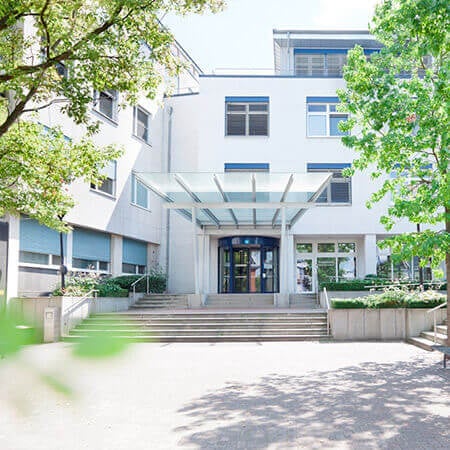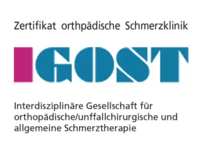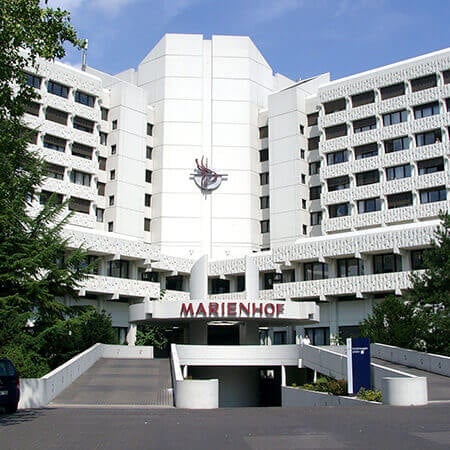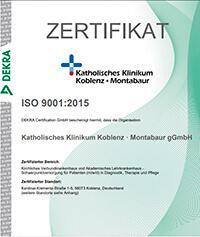One part of the spinal cord is the neuroglia, and its cellular structure performs both protective and supportive functions for nerve tissues and neurons.
Syringomyelia is a pathological process characterized by the death of neuroglia cells. Subsequently, the disease causes the formation of cavities, the most common localizations of which are the thoracic and cervical spinal cord sections. The pathology is prone to a gradual but steady progression that results in the development of various CNS abnormalities.
Content
- Specifics of syringomyelia
- Why does syringomyelia occur?
- How to spot syringomyelia?
- Treatment principles
- Conservative treatment
- Surgery
- Recovery process
- Prognosis
- Why is it worth undergoing the treatment in Germany?
- Why is it better to choose German hospitals for syringomyelia treatment?
- The cost of treatment in Germany
- Treatment with Booking Health
Specifics of syringomyelia
In neurology, syringomyelia belongs to chronic diseases that affect the structures of the central nervous system. The development of the pathological process begins during intrauterine development, at the stage of formation of the neural tissues of the fetus. Regarding the very development of the pathology, as has been noted earlier, syringomyelia is characterized by the formation of cavities or voids in the spinal cord. Inside these cavities are filled with cerebrospinal fluid, and they tend to grow slowly but steadily, which points out the specifics of the progression of the disease. As the cavities enlarge, the nerve endings in the spinal canal are compressed, and pressure is put on the spinal cord as well. As a result, patients experience various neurological disorders, which cannot be specified, as they turn out to be different in each clinical case.
In addition to the growing pressure on the nerve endings and structures of the spinal cord, the enlarged cavities are fraught with other complications. In particular, over time patients can suffer degeneration and death of nerve cells, which result in sensory and motor dysfunctions.
Syringomyelia is pathology of the central nervous system with formation of cysts in the spinal cord.
Treatment includes monitoring and symptomatic medicines, or spinal cord surgery.
Cost of surgical syringomyelia treatment is from €8,101. You can find other prices on the Booking Health website.
The best hospitals in Germany are:
- University Hospital Rechts der Isar Munich
- University Hospital of Ludwig Maximilian University of Munich
- Helios Hospital Krefeld
- University Hospital Frankfurt-am-Main
- Clinic of Advanced Biological Medicine Frankfurt-am-Main
Why does syringomyelia occur?
Syringomyelia can be either congenital or acquired. Congenital syringomyelia is the result of abnormal development of the embryo: the spinal cord develops incorrectly, which through a series of transformations results in syringomyelia. Syringomyelia can also be caused by a congenital abnormality of certain brain structures (Arnold-Chiari malformation, Dandy-Walker syndrome). In such cases, most cavities are formed in the lower cervical and upper thoracic spinal cord.
Acquired syringomyelia is formed due to the spinal cord injury.
How to spot syringomyelia?
The onset of the pathological process is asymptomatic for a long time. However, as it progresses, particular clinical signs appear, which may vary considerably from patient to patient.
The most common symptoms of syringomyelia are:
- Impaired tactile sensations, sensitivity to temperature, and pain.
- The loss of sensitivity of the muscular structures and even the joints (in the later stages of the progression).
- Intermittent episodes of aching pain in the shoulder girdle, neck, chest, and arms.
- Decreased eyelid and tongue movements, impaired hearing, impaired swallowing reflex, and impaired ability to speak.
- Most patients have decreased regenerative abilities, for instance, scratches take a long time to heal.
Treatment principles
The treatment of syringomyelia is symptomatically focused. For syringomyelia that causes significant pain and motor abnormalities, surgical treatment is indicated.
The goal of surgery is rather to prevent the progression of the disease or manage its symptoms. German neurosurgeons have achieved excellent results in stopping or significantly slowing down the progression of symptoms. However, surgery cannot eliminate the severe neurological deficit and the pathological cavity may reappear. Surgery for syringomyelia symptoms management is a standard procedure in German hospitals, but it is still performed only by leading specialists in neurosurgery.
Syringomyelia as a result of the spinal cord injury requires the removal of the vertebral arches with a further decompression procedure.
Syringomyelia is a group of diseases that rarely lead to a reduction in life expectancy, but significantly worsen its quality. Of course, these statements are real only with adequate treatment. As for the rehabilitation period, its duration and peculiarities depend on the degree of disease progression and treatment tactics.
German doctors do their best to stop neurological disorders in patients with syringomyelia and return them to a full life. Although, despite the current high level of medical science, a complete recovery from the diagnosis of syringomyelia is impossible. However, doctors in Germany use advanced treatment methods, which can significantly improve the patient's quality of life and even halt the progression of the disease. This is partly the reason why it is important to diagnose the pathology at an early stage to slow down its development before severe symptoms and complications arise.
Conservative treatment
The goal of conservative therapy is also to manage the progression of the disease and relieve its manifestation. For this, neurologists in Germany use modern medications. Dehydrating drugs, vitamin supplements, neuroprotectants, analgesics, or nerve conduction enhancers may be chosen for this purpose.
An important point in conservative therapy for syringomyelia is an individual approach, because a certain medication works for some people, but does not work for others. The doctors working in German departments of neurology develop an individual drug therapy scheme, calculating the dosage and duration of each drug for the specific clinical case.
Surgery
The essence of surgery for syringomyelia is to determine the exact location of syringomyelic cavities in various parts of the spinal cord and to eliminate them. Surgery also includes removal of adhesions and spinal cord decompression.
Decompression of the cervical spinal cord of the inferior medulla is one of the main surgical treatment options. Decompression implies access through the means of the cranial trepanation at the back of the skull. Shunting of the syringomyelic cavity with the creation of fluid outflow pathways into the abdominal cavity or subcutaneous space is currently one of the most widespread methods of surgical treatment.
Such spine surgery requires the utmost precision, which is why German surgeons often use robotic technology when performing them.
Recovery process
Despite eventual reports of complete neurological recovery after surgery, most patients manage to achieve stabilization or only moderate improvement of symptoms. The rate of recovery also depends on whether adult patients or children undergo syringomyelia treatment.
Pediatric syringomyelia is characterized by much less sensory and pain impairment than in adults, but a much greater risk of developing scoliosis, which is more resistant to treatment. In addition, both adult and pediatric syringomyelia does not progress equally in all patients. Some patients, usually those with more moderate symptoms, experience stabilization of symptoms within a year.
A frequent complication of symptom progression is the patient's need to adjust to life due to impairment or loss of some function. These adjustments can lead to a reduction in the quality of life. The goal of rehabilitation is to maintain functionality as much as possible using exercises and modified physical therapy, or, especially in the case of pediatric syringomyelia, the therapeutic measures are aimed at correcting scoliosis.
Prognosis
The prognosis for the patients with syringomyelia depends on the underlying cause of the disease and the type of treatment chosen. Untreated cases of syringomyelia have a 35 – 50% prognosis for long-term survival.
Decompression spine surgery for syringomyelia is considered a fairly effective treatment with a high chance of clinical improvement. In pediatric syringomyelia, surgical treatment is effective in stabilizing scoliosis.
The patients who underwent surgery for syringomyelia as a result of a spinal cord injury had a long-term reduction in pain and a greater survival rate compared to patients with the congenital pathology. Recent studies have shown an unsatisfactory long-term prognosis due to the high rate of disease recurrence in different forms.
Why is it worth undergoing the treatment in Germany?
The treatment of syringomyelia in Germany offers the widest range of diagnostics and treatment possibilities. Doctors actively apply the high-class robotic, endoscopic, and imaging equipment for the treatment of the most complicated diseases of the spine and spinal cord. Approaches and techniques used in Germany guarantee positive results even in the most dangerous and complicated cases.
Germany also has pediatric departments that treat children with spinal cord diseases. Over the years of work, the doctors of different specialties, including neurosurgeons, pediatricians, intensive care specialists, and also specialists in pediatric surgery, neuroradiology, orthopedics, and urology, have been closely cooperating. Thanks to the interdisciplinary approach to diagnostics, treatment, and postoperative rehabilitation, the success rates for the treatment of syringomyelia are high in Germany.
Why is it better to choose German hospitals for syringomyelia treatment?
Neurosurgery in Germany is considered the most prestigious medical specialty, as this field requires great precision, vast experience, and knowledge. The neurosurgeons at the German hospitals are well known for their professionalism, while the list of treatment options performed at these hospitals is impressive, which is why they are so popular among foreign patients.
The use of high-quality equipment in both diagnostics and treatment of syringomyelia and other diseases of the spinal cord allows for the fastest return of the patient to a regular lifestyle.
You are welcome to check out medical facilities that have technically advanced diagnostic and surgical equipment at their disposal at the Booking Health website.
The cost of treatment in Germany
Neurosurgery is one of the most expensive areas in medicine, since it is associated not only with the most complex surgical procedures but also with risks. The cost of treatment of syringomyelia in Germany varies depending on the price of a specific type of surgery, the extent of manipulations, duration of surgical intervention, rehabilitation, and several other aspects.
However, the average price of diagnostics starts at 469 EUR.
The price of surgical treatment of syringomyelia in Germany starts at 8,101 EUR.
The price of neurological rehabilitation for syringomyelia in Germany starts at 540 EUR.
Please contact Booking Health to learn more about the nuances of treatment in Germany and the cost of treatment in German hospitals.
Treatment with Booking Health
The whole process of treatment organization is much easier with Booking Health. We assist with any matter regarding the arrangement of the treatment from communication with a hospital to offering the services of a personal interpreter for the time of treatment.
You can always contact Booking Health for advice at any time. If you have the results of the diagnostic examination already carried out with you, this will shorten the time for drawing up a preliminary plan for syringomyelia treatment in Germany.
All you need to do is fill in the request form on the Booking Health website, and a medical advisor will contact you.
Authors:
The article was edited by medical experts, board certified doctors Dr. Nadezhda Ivanisova and Dr. Vadim Zhiliuk. For the treatment of the conditions referred to in the article, you must consult a doctor; the information in the article is not intended for self-medication!
Sources:
National Library of Medicine








